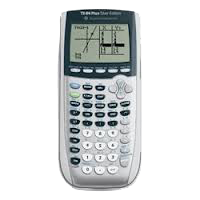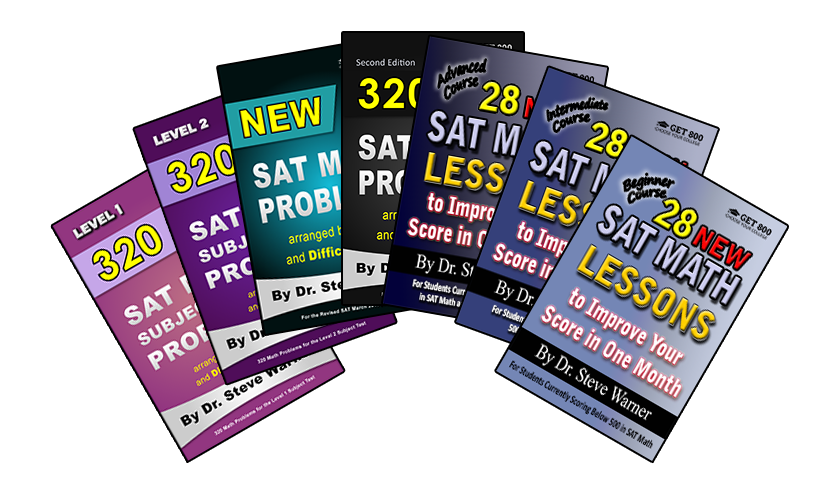
The Correct Way To Take SAT Math To Maximize Your Score
Today we will be discussing the correct way to take the SAT to maximize your improvement.
VERY IMPORTANT: This information is only for students that are currently scoring below 500 on College Board practice SATs. If you are not currently scoring in this range, then this information is not for you. In fact, following this information can actually harm your score.
If you are scoring between 500 and 600 in SAT math, then go to this page: The Correct Way To Take The SAT To Maximize Your Improvement In Math
If you are scoring more than 650 in SAT math, then go to this page instead: The Correct Way To Take The SAT For An 800 In Math
Now, for those of you that are inside of this score range, it is very important that you follow the advice here every time you take a practice test. Once you start scoring higher than 500 on practice tests you can modify your approach.
The system I will be giving is simple, but nonetheless you will need to apply it a few times to become comfortable with it before test day. You should take at least four practice SATs before taking your actual SAT, approximately one practice test per month.
 Pacing: Do not waste your time on a question that is too hard for you or that will take too long. After spending about 1 to 1 and a half minutes on ANY question, you should decide if you understand the question enough to finish it fairly quickly. If not, then mark it off and move on. Do not worry – it is not forgotten – you can still come back to it later, time permitted.
Pacing: Do not waste your time on a question that is too hard for you or that will take too long. After spending about 1 to 1 and a half minutes on ANY question, you should decide if you understand the question enough to finish it fairly quickly. If not, then mark it off and move on. Do not worry – it is not forgotten – you can still come back to it later, time permitted.
The worst thing that you can do is to get hung up on one question.
Feel free to take a guess, but you should still mark it off and come back to it later.

Make sure that you are using your calculator when appropriate (on the section where it is allowed). But be aware that your calculator can slow you down if it is overused.
Remember that the last few multiple choice questions in each section are hard, whereas the first few grid in questions are easy. So you may want to temporarily skip over the last few multiple choice questions, and go back to them a bit later.
Attempt the right number of questions: You should not be attempting to solve every single question. This may actually lower your score. On the 20 question section (no calculator) you should be attempting about 6 to 9 of the multiple choice questions and 2 or 3 of the grid ins.. On the 38 question section (calculator allowed) you should be attempting about 16 to 21 multiple choice questions and about 4 or 5 grid ins.
By pacing yourself to answer a few less questions you will no longer feel rushed, you will have more time to “check over” your answers properly, and you will not be wasting time on questions that you are very likely to get wrong anyway.
The correct way to check over your answers: So you have attempted all the questions specified above, and you have about five minutes left. What is the best way to check your answers?
DO NOT simply look over your work. Start the test over and redo each question from the beginning without looking at your prior work. Ideally you should try to use a different method than you used the first time.
If you picked numbers the first time, then at least pick new numbers. If you cannot think of a different way to solve it, that is okay. Just do it again. Then compare your two answers. If they are the same, move on. If not, then take a little time to catch your careless mistake.
Summary:
(1) When taking your SAT make sure you pace yourself properly.
(2) Be aware of when you have spent about 1 minute on any problem.
(3) “Check” over your answers the right way.
Use this method on at least four practice tests before you take the real SAT. This way you will be very comfortable with this method on test day. Pacing yourself properly will give you plenty of time to check your work and ensure that you maximize your score on test day. You may want to take a look at the Beginner Course from my “28 SAT Math Lessons” series for this purpose. The Beginner Course is targeted specifically for students currently scoring below 500 in SAT math. Here you will develop the confidence you need to end the frustration you have been experiencing. In addition, you will learn all of the most important techniques you need to know to get you to the next score level. In addition there are over 250 problems, most of which are Level 2 and 3 – exactly the types of problems you need to practice to get close to a 600. Click on the picture below for more information about these books.
Best of luck,

Dr. Steve
Get 800
p.s.: Here is a special offer on all of my SAT math prep books: SAT Math Prep Books Full Bundle


